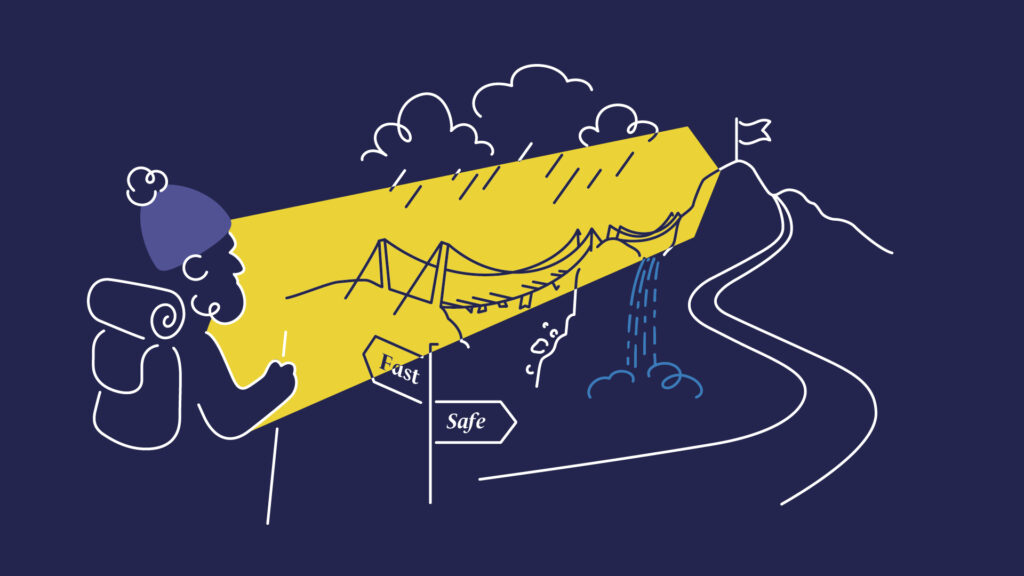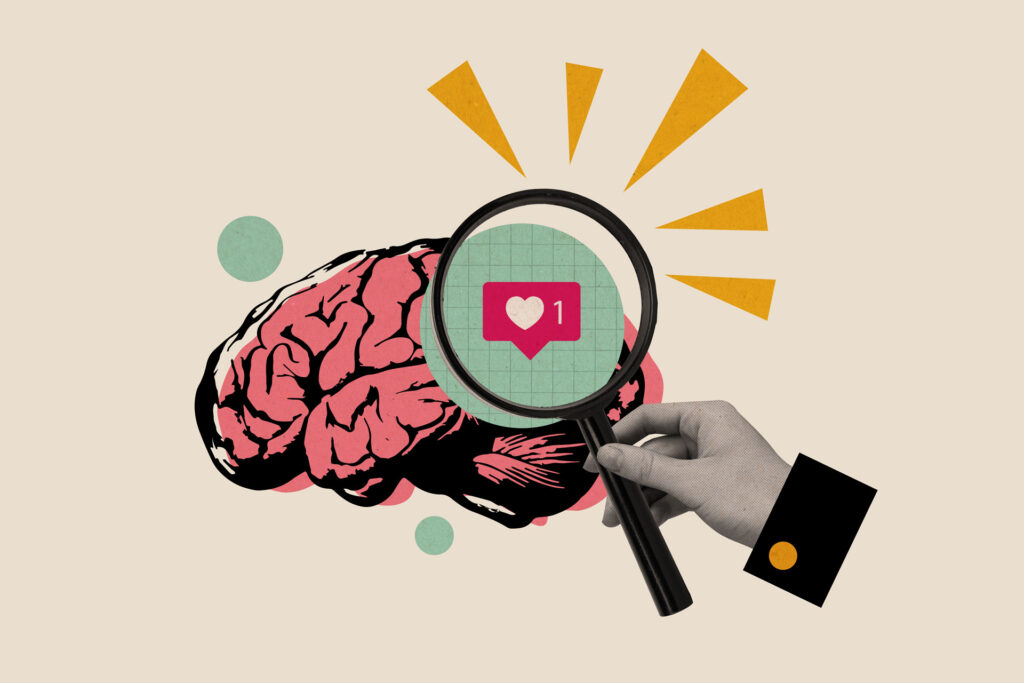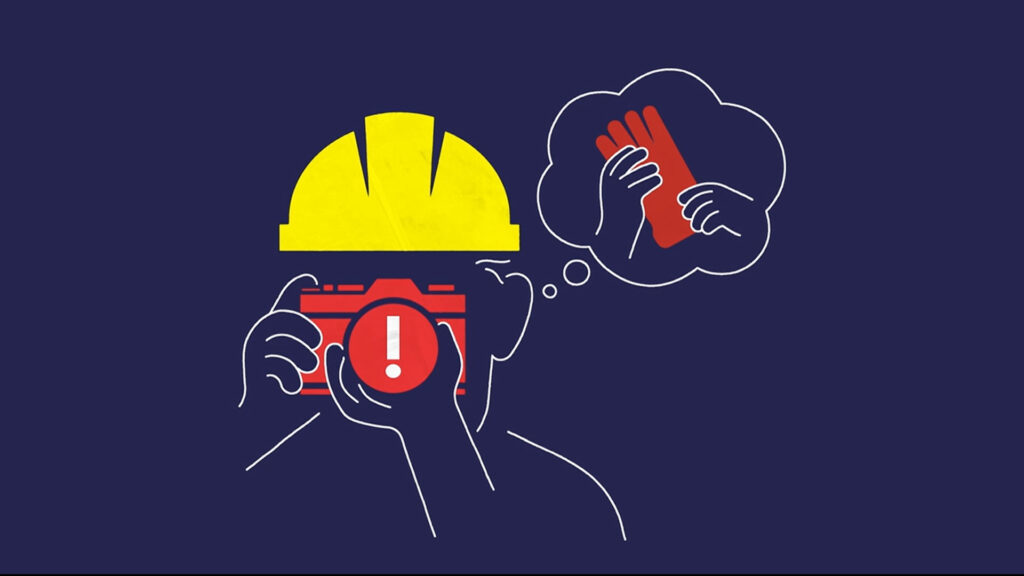
When it comes to safety in the workplace, our brains can sometimes work against us. Cognitive biases, the mental shortcuts our minds use to quickly process information, can influence how we make decisions and perceive risks—often without us even realising it. By becoming more aware of these biases, we can make more conscious decisions and improve safety outcomes for everyone.
Let’s explore eight common cognitive biases that can impact safety at work:
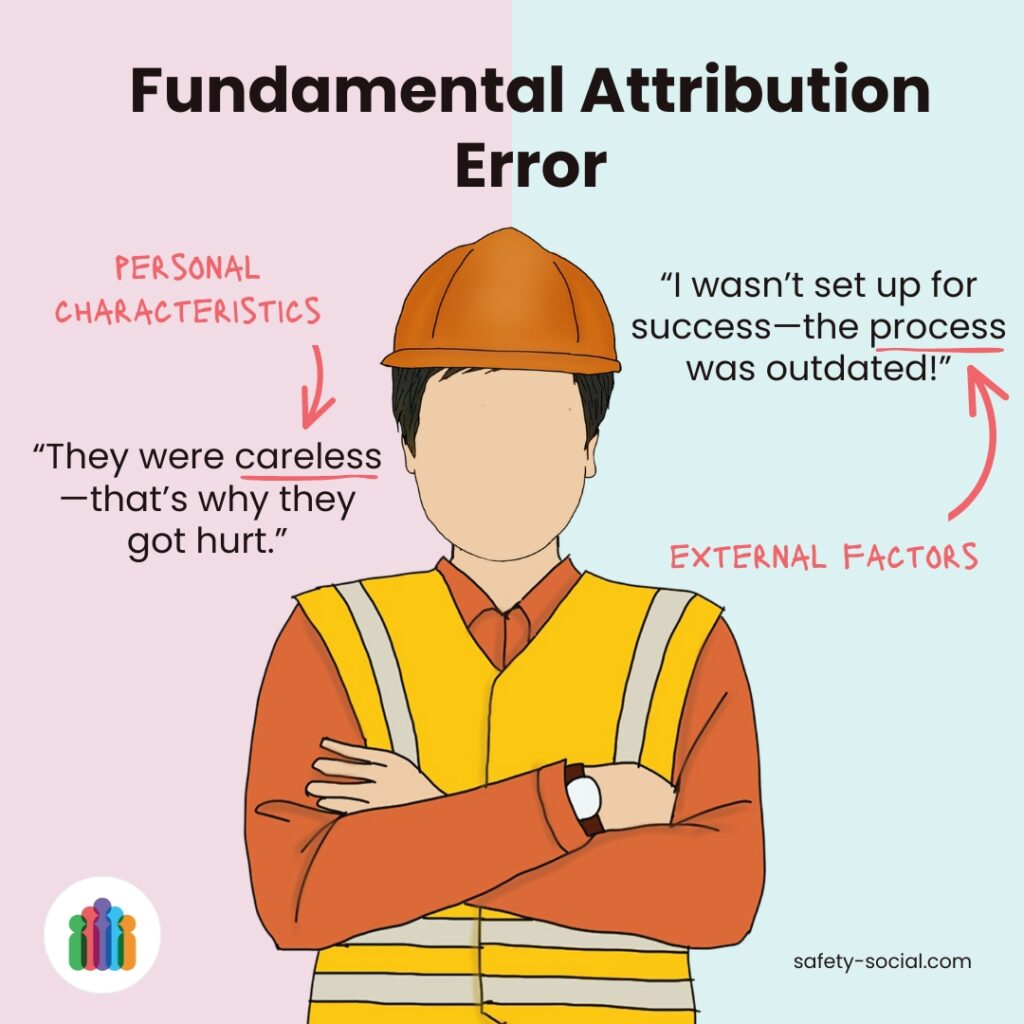
1. Fundamental Attribution Error
This bias leads us to overemphasise personal characteristics or intentions when explaining someone else’s actions, while blaming external factors for our own.
In safety contexts, this might sound like: “They were careless—that’s why they got hurt,” but when we make a mistake, we might say, “I wasn’t set up for success—the process was outdated.”
By recognising this bias, we can focus on identifying external factors contributing to incidents, rather than blaming individuals.
2. Groupthink
When the desire for harmony or conformity within a group leads to irrational or unsafe decision-making, that’s groupthink in action.
Imagine noticing a safety hazard but not speaking up because no one else seems concerned. It’s easy to assume that if the group isn’t worried, it must be fine.
Challenging this bias and encouraging open communication can prevent serious incidents.

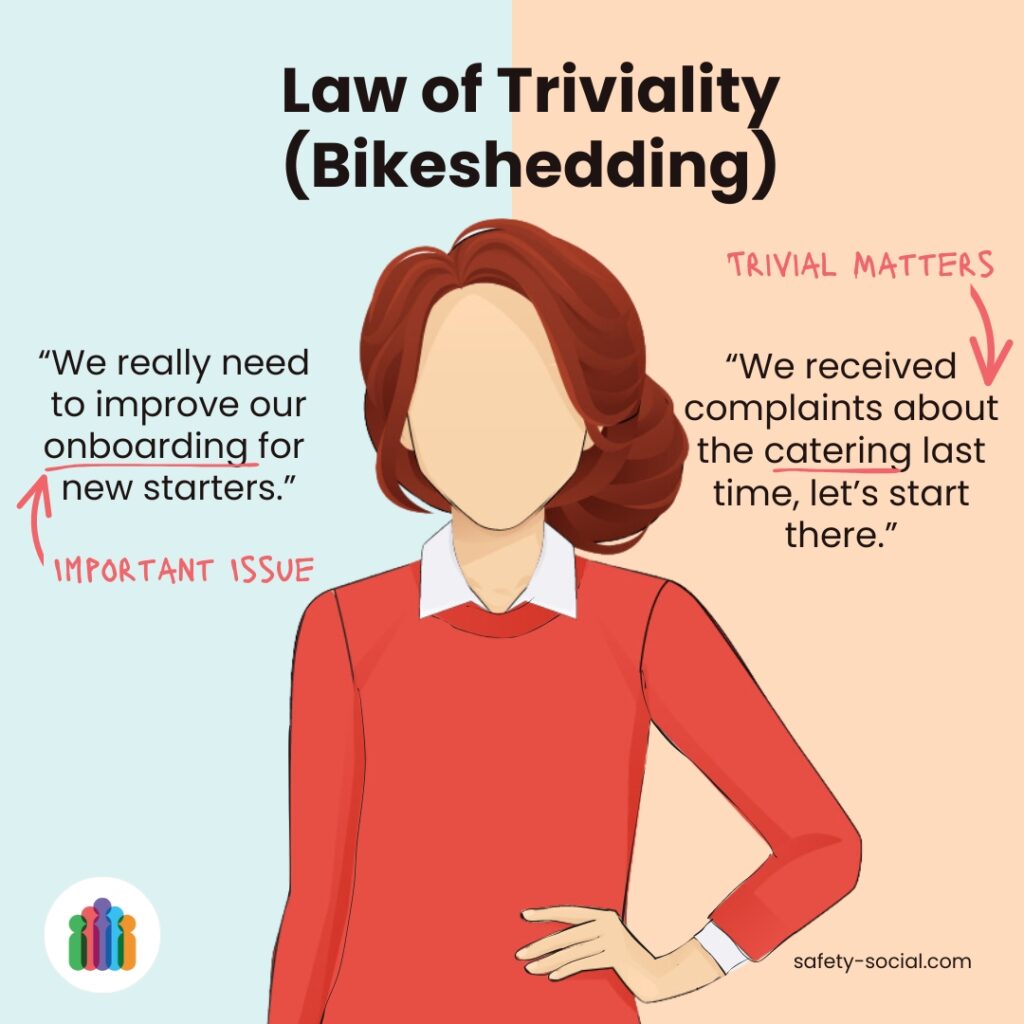
3. Law of Triviality (Bikeshedding)
Have you ever noticed how people often spend more time on small, insignificant details rather than tackling the bigger, more important issues? This is the Law of Triviality (also known as ‘bikeshedding‘).
We’ve all been in those meetings. You know, the ones where we’re working on a project—like a new onboarding program—and more time is spent discussing catering than the actual content or structure of the training.
That’s Law of Triviality in action.
4. Negativity Bias
This bias makes us pay more attention to negative experiences and information, sometimes distorting the reality of a situation.
For example, after a single incident, you might conclude that “the team is always making mistakes,” even though they usually complete their work without errors.
Recognising negativity bias helps to provide a more balanced and realistic view of workplace safety.
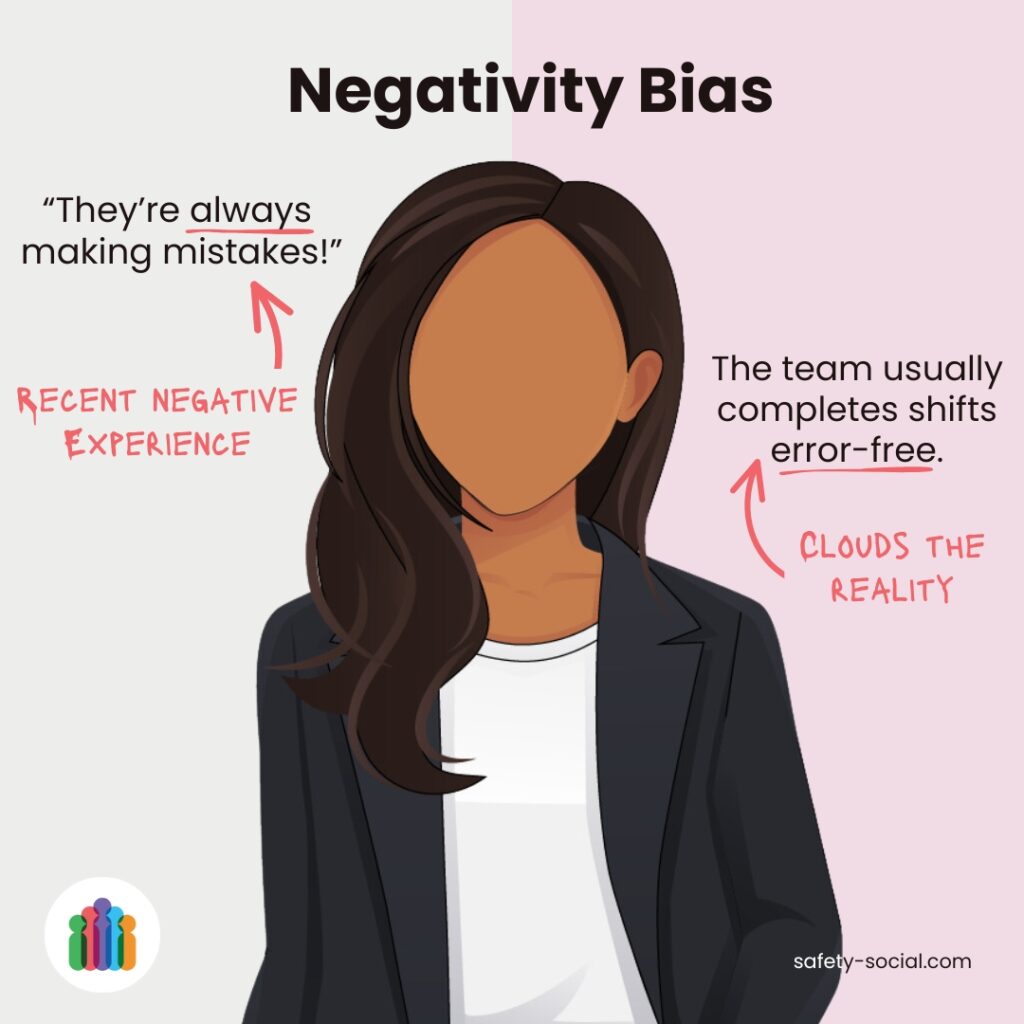
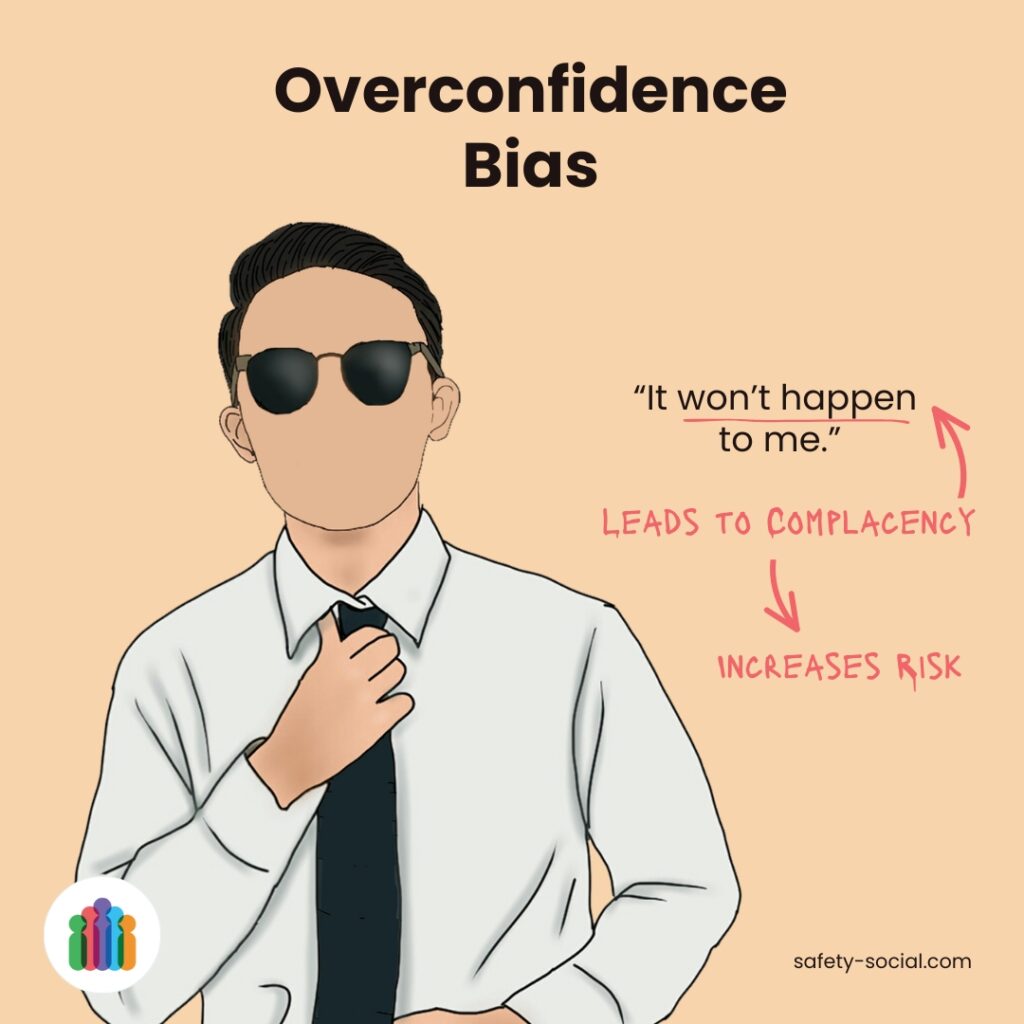
5. Overconfidence Bias
Most people believe they are more skilled, agile, or knowledgeable than they actually are, which can lead to risky behaviour.
The classic example: “It won’t happen to me!”
Overconfidence can lead to complacency in safety measures, so staying grounded and aware of one’s limitations is crucial to avoiding unnecessary risks.
6. Availability Bias
This occurs when we overestimate the likelihood of an event based on how easily we can recall similar incidents.
If a recent hand injury was widely shared, people might become overly cautious about hand injuries in the short term, even if the actual risk hasn’t increased.
Being mindful of this bias helps maintain a consistent safety focus across all potential hazards, all the time.
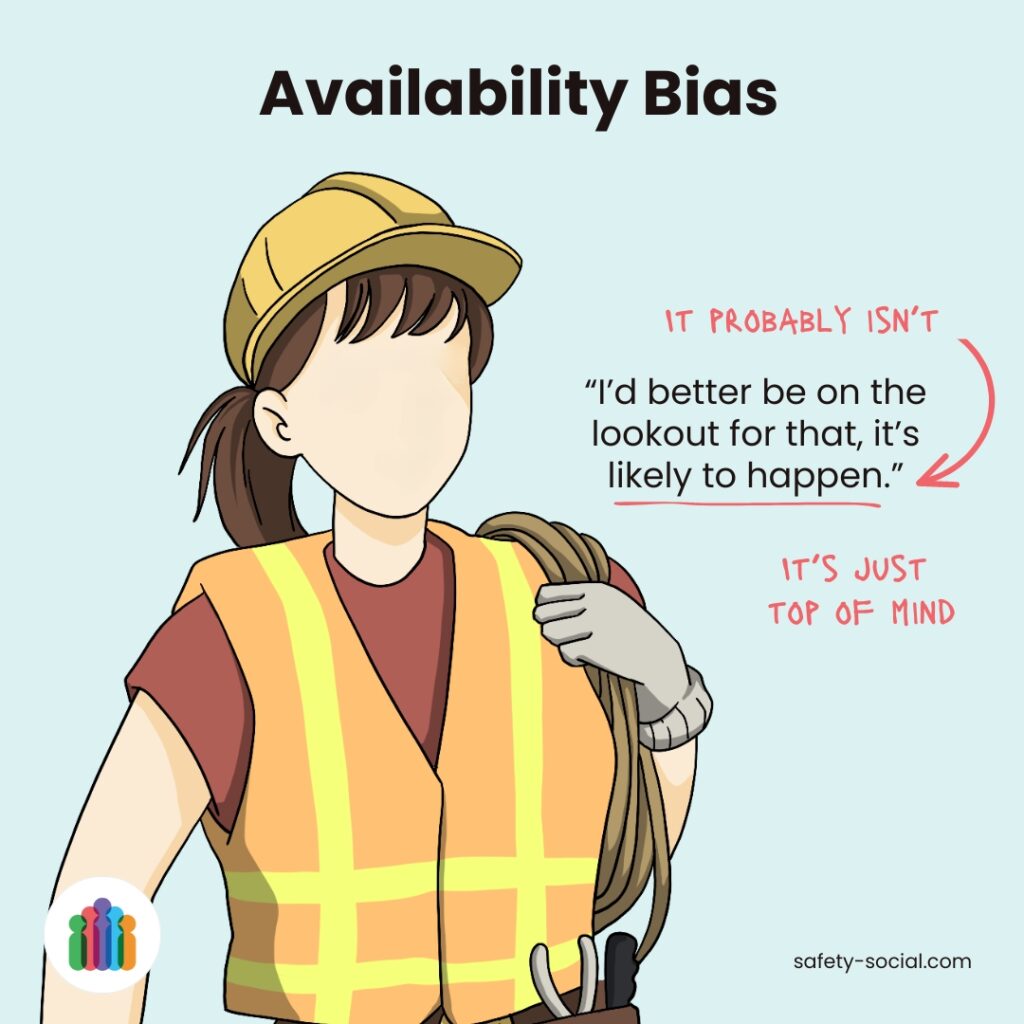
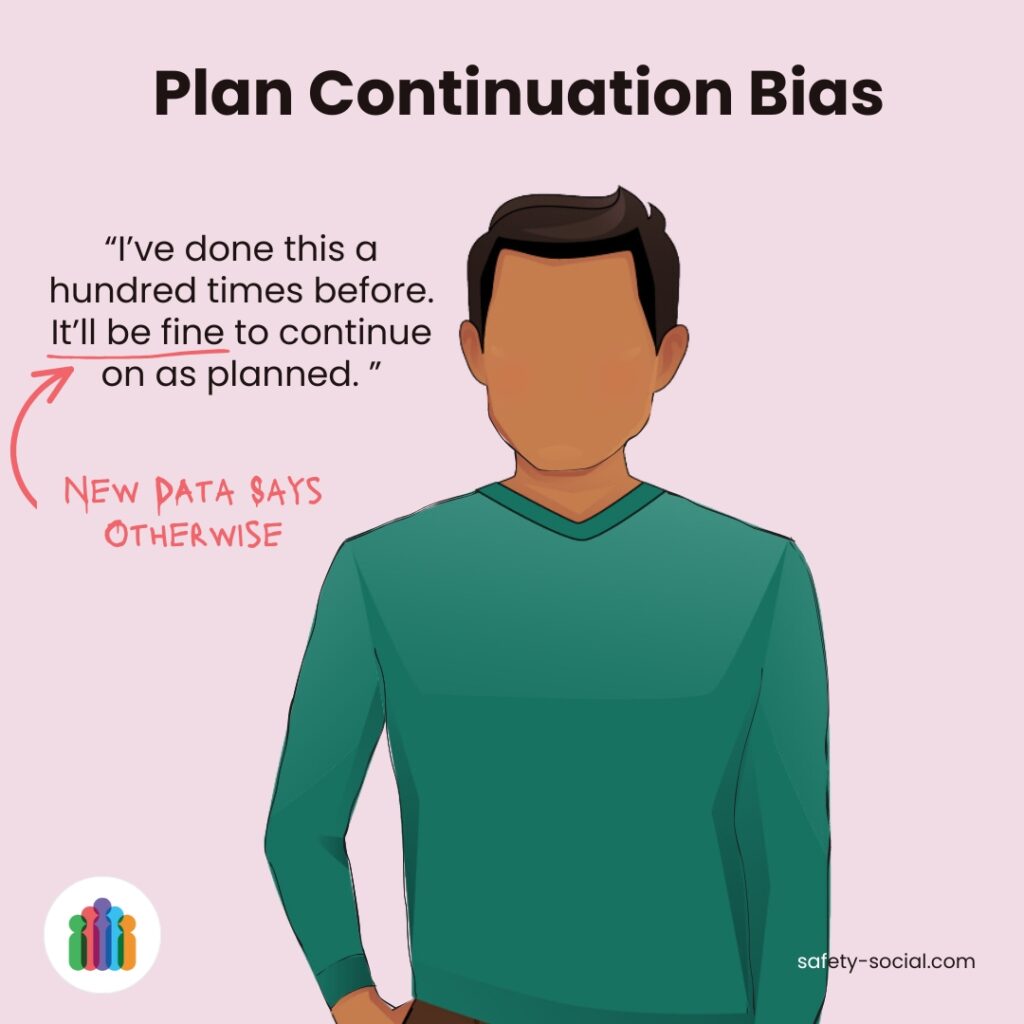
7. Plan Continuation Bias
Once we’re committed to a plan, it’s hard to change course—even when new information suggests we should.
For example, a site manager may continue with a project despite a weather alert because they’ve spent months preparing.
Recognising when conditions or data have changed, and adapting the plan accordingly, is key to staying safe.
8. Status Quo Bias
We tend to resist change, even when a new process or system is better and safer.
For example, a team might resist adopting a new, streamlined process simply because they’re used to the old one, even though the new method is safer and more efficient.
Being open to change can help improve safety process, engagement and culture over time.
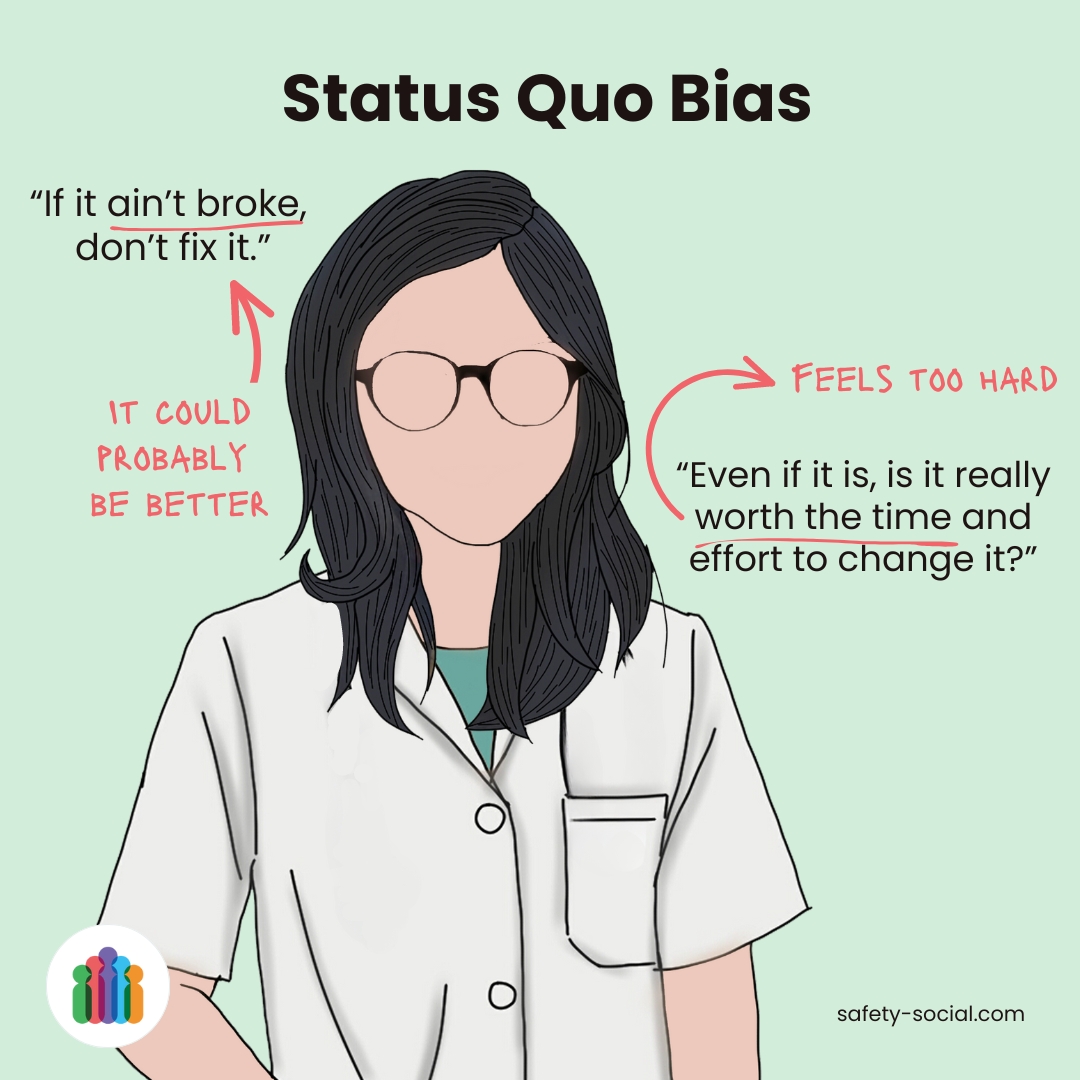
Final Thoughts
Cognitive biases aren’t inherently bad—they’re simply ways our brains process information quickly. But in safety-critical environments, they can lead to poor decisions if we’re not mindful of them. By being aware of these common biases, we can take a step back, assess situations more objectively, and make safer choices.
Want more curated content like this straight to your inbox? Subscribe to our newsletter. 👇

